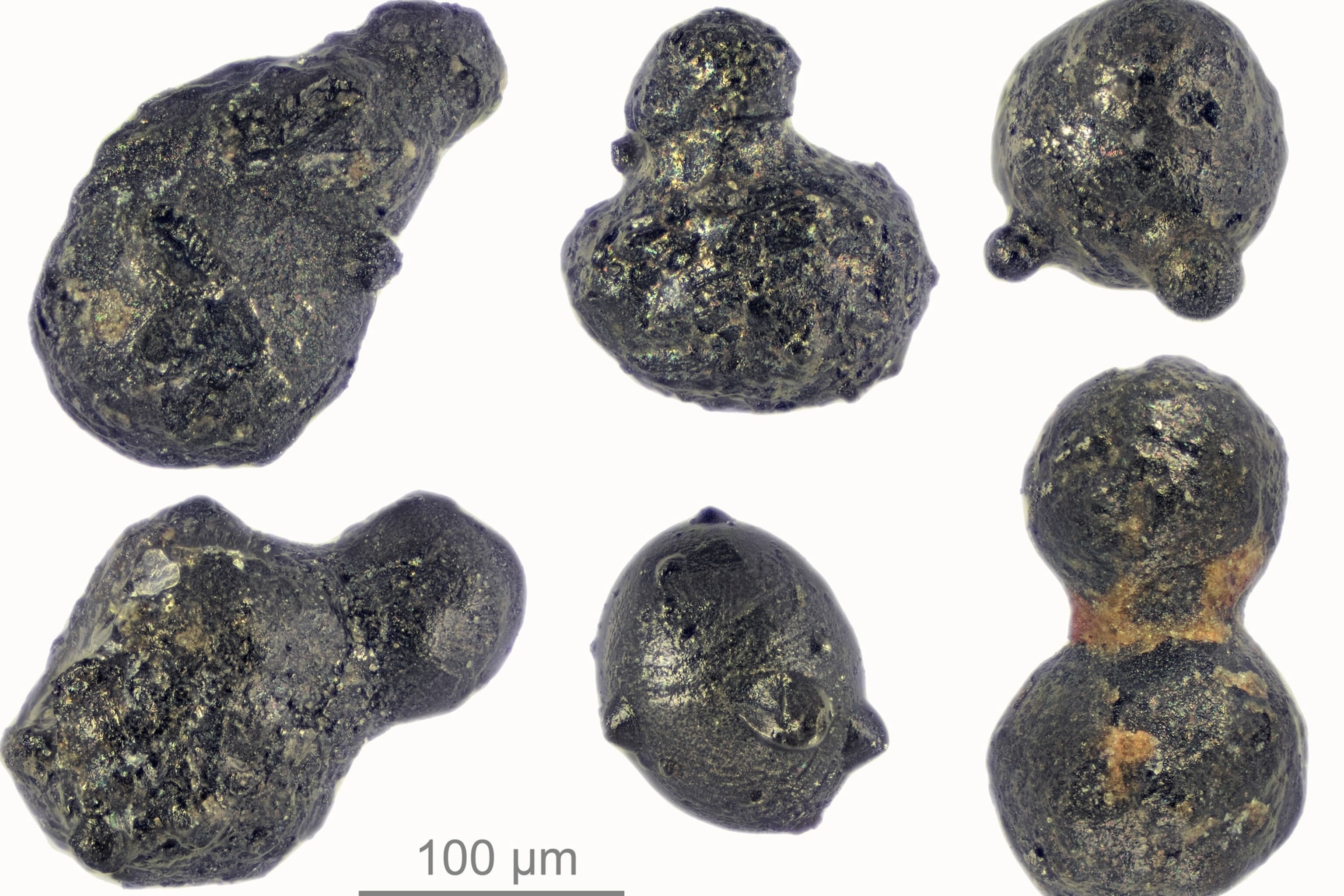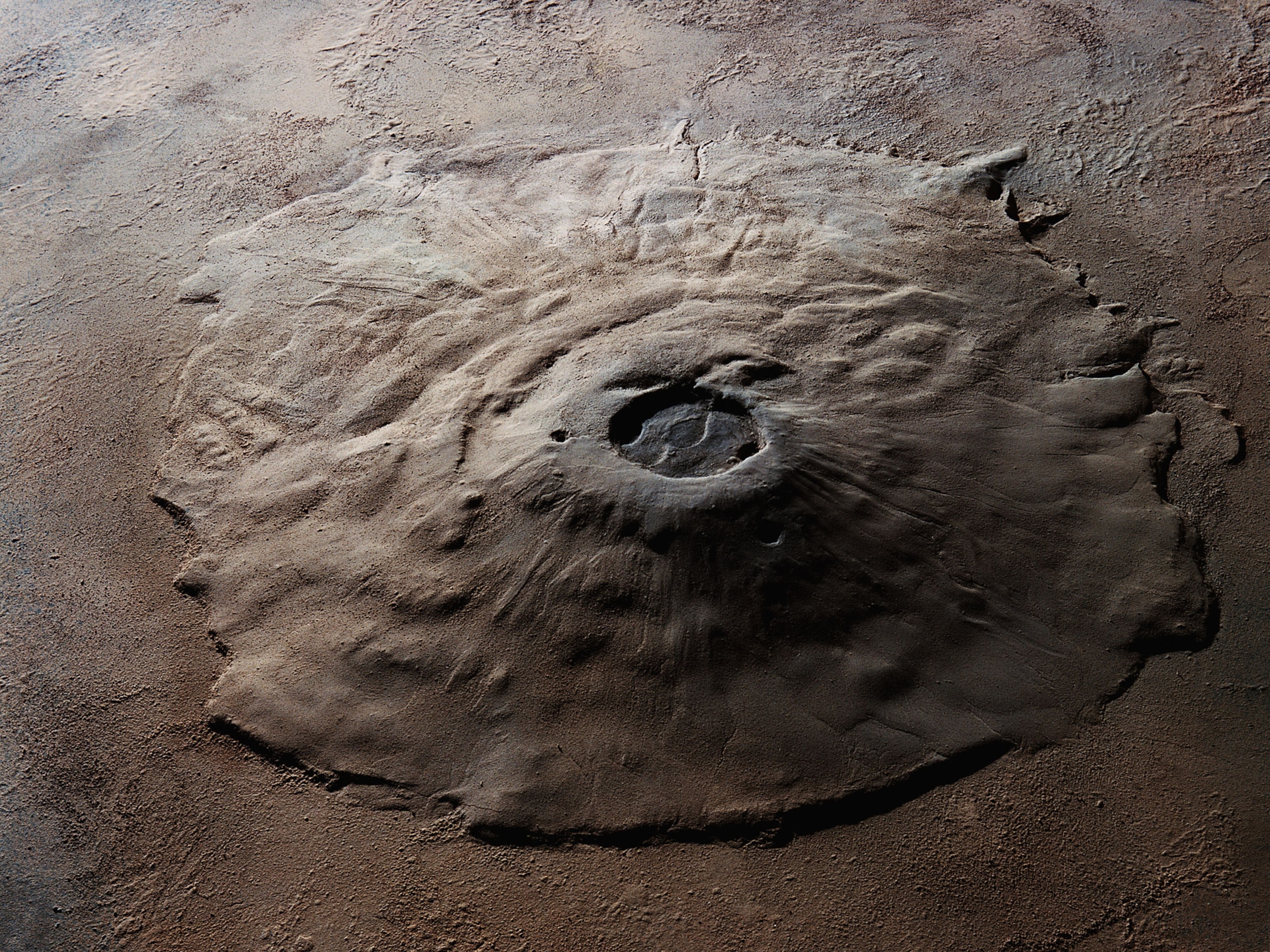Ages ago, an asteroid about the length of a soccer field arced through the solar system on a collision course with Earth. It hurtled toward the planet’s southern pole, aiming straight for an icy, unpopulated expanse: Antarctica.
It was 430,000 years ago, in the middle of the Pleistocene epoch. Elsewhere, some of the earliest Neanderthals were spreading across Europe, mammoths roamed the Northern Hemisphere, and Earth’s ice sheets were growing thicker.
The space rock slammed into the planet’s thick atmosphere. Friction tore it apart, and as the disintegrating meteor plummeted toward the Antarctic plateau, it left a flaming, incandescent trail in its wake. As it neared the ice, the meteor exploded in the sky, launching a superheated jet of gas and vaporized cosmic debris straight at the ground.
These kinds of mid-air explosions can cause immense amounts of damage, but they don’t gouge craters in Earth’s crust—meaning that finding their leftover fingerprints, and determining how frequently they occur, has been a bit of a guessing game.
Now, scientists studying tiny particles found in Antarctica have uncovered evidence of this ancient meteoritic airburst, and they used chemical clues locked in the particles to piece together what happened hundreds of thousands of years ago.
“We know asteroids are dangerous, and recent studies have suggested that airbursts are more dangerous than large asteroids, because larger asteroids are very rare,” says Matthias van Ginneken, a planetary scientist at the University of Kent and lead author of a new study describing the ancient explosion in the journal Science Advances.
In 2013, a house-size asteroid blew up over the Russian town of Chelyabinsk, shattering glass and injuring more than 1,600 people. If a town had been in the crosshairs of the larger Antarctic meteor 430,000 years ago, it would have been destroyed. The explosive force was four times more powerful than the 1908 meteor airburst that flattened forests near Tunguska, Russia, and thousands of times stronger than the nuclear bomb that detonated in Hiroshima, Japan.
Airbursts such as the one over Chelyabinsk—and another that detonated over the Bering Sea in 2018—often occur unexpectedly because smaller asteroids are difficult to find, even with Earth’s best telescopes. “Now we have a way to find traces and remnants of such impacts in the geological record, which could be important to reassess the impact history of our planet,” van Ginneken says.
Frozen detectives
In February 2018, van Ginneken visited Antarctica—a dream trip for him—in search of cosmic breadcrumbs. As a Ph.D. student, he’d studied tiny grains collected from other Antarctic field sites, but he had yet to see the frozen continent with his own eyes. When he arrived with the Belgian Antarctic Meteorite expedition, it was the end of the field season and they had just two weeks to scour the landscape for microscopic extraterrestrial confetti.
The team surveyed two dozen sites, and one of them—a high, flat patch of barren rock bordering the Antarctic Plateau in the Sør Rondane mountains—was a treasure trove. Scraped clean by glaciers more than 800,000 years ago, the summit site perfectly preserved cosmic debris.
“In Antarctica, you don’t have much else falling on top of mountains—it’s very clean, there’s no human activity, there is no vegetation,” van Ginneken says. “So all the material that falls from space is preserved over very long times.”
He and his colleagues collected more than 12 pounds of sediment from the summit and took it back to the lab. Ultimately, they selected 17 spherules, tiny round grains of melted meteorite that are forged during impacts, for detailed scrutiny. Immediately, van Ginneken says, he could tell the black grains were alien in origin and that something wasn’t quite right: Instead of being single spheres like most micrometeorites, some of them were stuck together.

When he and his team probed the spherules’ oxygen composition, the grains proved even stranger, containing ratios of oxygen isotopes that are inconsistent with known asteroids. Those ratios suggested that the spherules formed in direct contact with the Antarctic ice, which is unusual for an airburst.
The spherules closely resembled extraterrestrial dust that van Ginneken had studied before—grains embedded in immense ice cores retrieved from the nearby Japanese Antarctic station at Dome Fuji and from the French-Italian station at Dome Concordia on the other side of the continent. Those grains are roughly 430,000 years old, an age that scientists can calculate based on their position in the ice cores—buried 1.5 miles beneath the surface.
Because of the similarities between the samples, the team reasoned that the grains were all formed during the same event. Given the lack of craters in Antarctica, plus the spherules scattered across the continent, they suspected some kind of mega-Chelyabinsk-like airburst occurred in the distant past.
Chemical clues
Putting together the spherules’ story from there wasn’t simple, though, in part because of the odd oxygen isotopes. Normally, spherules that form from melted meteorite during a mid-air explosion don’t interact with a planet’s surface before re-solidifying and falling to Earth. So Natalia Artemieva, from the Planetary Science Institute, used computer simulations to test whether a more complex type of airburst might have occurred.
“We already knew that such events happen, we just need a bit larger body to allow the plume to reach the surface (but not too big to make a crater—just ’kissing’ ice would be perfect),” Artemieva wrote in an email. “After a few attempts, we found one possible scenario.”
In the model of the Antarctic impact, vaporized debris from an exploding asteroid is launched toward the ground in a plume of extremely hot gas, which pummels the planet’s surface like an interplanetary tsunami. It’s somewhat of a hybrid between a Chelyabinsk-like airburst, which doesn’t produce a downward plume, and a normal crater-creating collision.
The team called it a “touchdown” impact, and it’s very similar to other explosions Mark Boslough, a physicist at the University of New Mexico, has modeled. Boslough suspects that one of these events is the culprit behind mysterious, 30-million-year-old glass scattered across the Eastern Sahara—smooth, yellow fragments resembling sea glass that have puzzled scientists because of their otherwise unexplainable presence in the middle of the desert.
Boslough says the simulations in the new paper are solid and that it wouldn’t be surprising for a touchdown airburst to have exploded over prehistoric Antarctica.Touchdowns can pack a deadly punch, obliterating whatever is beneath them. And there’s a large number of space rocks near Earth that are the right size—between 300 and 500 feet across—to produce touchdown impacts, so it’s vital to understand how frequently these violent collisions with our planet occur.
“It’s pretty scary when you think about it,” van Ginneken says. The new research, however, could provide a way to detect other touchdowns in the geologic record, allowing scientists to gain a better understanding of the threat these events pose to Earth.
Considering other possibilities
Christian Koeberl, of the University of Vienna, finds the team’s interpretation reasonable, but he’s a bit skeptical. The trouble starts, he says, with pinning an age on the spherules, which is extremely hard to do. Although the team identified a resemblance with the dust from other sites, it’s not an ironclad association—a point that van Ginneken agrees with.
“It’s not necessarily a fault of theirs, it’s just difficult to do,” Koeberl says. “It’s a common problem.”
Instead, Koeberl says it’s possible the spherules are as old as the clean-swept surface where they were found—relics from a much older impact-forming event. If that’s the case, perhaps the absence of a crater isn’t so surprising: A small impact gouge could have been erased by the shifting ice sheets.
Koeberl says that if these types of impacts are common, there should be ample evidence of their existence in the geologic record—but touchdown impacts have not been definitively found before. He is also not convinced that the oxygen isotope ratio points toward mixing with ice. It’s possible the team recovered fragments from a rare type of asteroid that scientists haven’t previously characterized, but van Ginneken thinks that’s unlikely.
“I think the data are good, and the measurements are fine, and the interpretations are not impossible but also not as constrained by the data as the paper appears to say,” Koeberl says. “There are more possibilities, but it’s an interesting story to get out there.”
Scientists hoping to figure out how frequently airbursts occur are also turning their eyes to the skies and making a detailed census of objects that could explode overhead. For now, we still don’t have a way to deflect cosmic hazards—but a mission launching later this year to slam a spacecraft into an asteroid and knock it off course could provide one way to protect our planet.
In the meantime, better understanding how big of a blast an airburst could produce will be crucial for helping people in its path get out of the way in time.
Related Topics
You May Also Like
Go Further
Animals
- How can we protect grizzlies from their biggest threat—trains?How can we protect grizzlies from their biggest threat—trains?
- This ‘saber-toothed’ salmon wasn’t quite what we thoughtThis ‘saber-toothed’ salmon wasn’t quite what we thought
- Why this rhino-zebra friendship makes perfect senseWhy this rhino-zebra friendship makes perfect sense
- When did bioluminescence evolve? It’s older than we thought.When did bioluminescence evolve? It’s older than we thought.
- Soy, skim … spider. Are any of these technically milk?Soy, skim … spider. Are any of these technically milk?
Environment
- Are the Great Lakes the key to solving America’s emissions conundrum?Are the Great Lakes the key to solving America’s emissions conundrum?
- The world’s historic sites face climate change. Can Petra lead the way?The world’s historic sites face climate change. Can Petra lead the way?
- This pristine piece of the Amazon shows nature’s resilienceThis pristine piece of the Amazon shows nature’s resilience
- Listen to 30 years of climate change transformed into haunting musicListen to 30 years of climate change transformed into haunting music
History & Culture
- Meet the original members of the tortured poets departmentMeet the original members of the tortured poets department
- Séances at the White House? Why these first ladies turned to the occultSéances at the White House? Why these first ladies turned to the occult
- Gambling is everywhere now. When is that a problem?Gambling is everywhere now. When is that a problem?
- Beauty is pain—at least it was in 17th-century SpainBeauty is pain—at least it was in 17th-century Spain
Science
- Here's how astronomers found one of the rarest phenomenons in spaceHere's how astronomers found one of the rarest phenomenons in space
- Not an extrovert or introvert? There’s a word for that.Not an extrovert or introvert? There’s a word for that.
- NASA has a plan to clean up space junk—but is going green enough?NASA has a plan to clean up space junk—but is going green enough?
- Soy, skim … spider. Are any of these technically milk?Soy, skim … spider. Are any of these technically milk?
Travel
- Could Mexico's Chepe Express be the ultimate slow rail adventure?Could Mexico's Chepe Express be the ultimate slow rail adventure?
- What it's like to hike the Camino del Mayab in MexicoWhat it's like to hike the Camino del Mayab in Mexico








